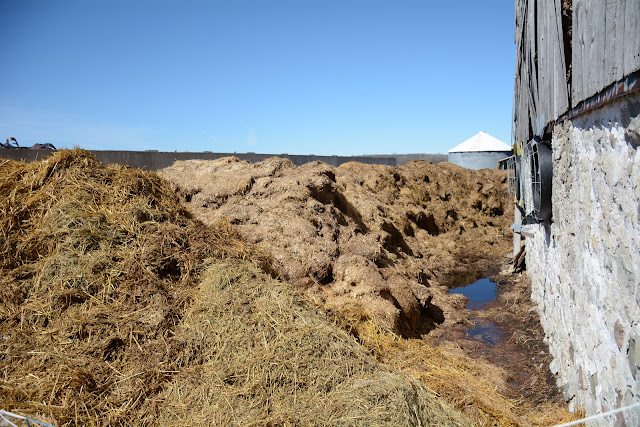What is CIDRing you ask? Good question. Before Farm Girl started working at her job, I had never heard of it before myself. It stands for Controlled Intravaginal Drug Release. Basically, it is the process of withholding a ewe's heat cycle in order to synchronize estrus cycles in the entire flock. Hence, we will have lambing over a day or two as opposed to weeks or months.
First step is to corral the flock and send them through a chute where they get inserted with a T-shaped plug that kind of reminds me of a tampon.
As we don't have any proper handling equipment, we had to fashion something out of materials we did have.
It worked decent enough but I was left to herd them forward from the behind, which most of them didn't appreciate. Farm Girl was up front and in charge of inserting the CIDR's while Farm Boy handled the release gate.
After inserting a select group of 8 ewes we waited 12 days and then pulled the CIDR's out before injecting them with PMSG which is an injection to help stimulate the ovaries and fertilization and (hopefully) produce more multiple births. We introduced the ram 24 hours later and then repeated the procedure again the next day with another 8 ewes per ram, and then once again the day after that until all ewes were impregnated. By doing this, we are giving the ram less ewes to have to work with and a chance to rest in between each breeding. We fastened a breeding harness on the rams and then left him in with the ewes for a week.
Now it is just a waiting game. They say that the best you can hope for in an off-season breeding schedule is a 75% success rate. That was news to me. Disappointing news. I have the year all planned out and budgeted for, and a 75% lamb crop at the end of the year was not in the plans.
Sometimes I get overwhelmed or discouraged and think about throwing in the towel. Thankfully, Farm Girl prevents me from following through with that. I know it takes time and perseverance but I allow the stress of it all to take over. Then I hear someone's farm story and their personal struggles to make their farms afloat, and I feel ashamed of myself. Such as this weekend. Me and the kids toured three sheep farms over the weekend and one of the farmers told how he had started out with 200 ewes which after a couple years, he lost them all to scrapie. That is the kind of thing that would make me throw in the towel and call it quit. But not this farmer, he persevered and started over with 75 healthy ewe lambs. It's stories like that which make me hang in and keep on going.
As it turned out, his farm was my favorite farm on the tour. He didn't have top notch equipment or
the state-of-the-art facility but he was so well-organized. I loved it. Probably because I feel so swamped and unorganized that his place looked so appealing.
The sheep were kept in the bottom of the old bank barn with an extension built on to the back.
Where most farms use the upstairs of a bank barn to house hay and straw, this farmer utilized the space and put the nursery and replacement lambs up there.
 |
| Replacement ewes |
 |
| The nursery |
 |
| Charts and clipboards make recording handy and easy |
 |
| Everything is labeled and packaged. Even the extension cords! |
 |
| Theirs... |
 |
| ...Ours |
Do you have any idea how much hauling this elevator could save? Brilliant!
Farm Girl thought it was embarrassing when I took photos of everyone's manure piles.
But it made me feel better about my own big pile of shit. However, I am happy to update on that topic that a nearby farmer has gladly been helping himself to my manure and the pile is coming down considerably.
Just comparing these photos after uploading, I feel a ton of satisfaction.






















